
电力能源汇刊(英文)(iEnergy)(国际刊号)
- 主管单位:
- 主办单位:
清华大学
- 国际刊号:
2771-9197
- 国内刊号:
- 学科分类:
- 字数:
-
- 有无基金:
- 周期:
国际号刊-季刊
- 特殊属性:
外文期刊
- 电话:
- 邮箱:
iEnergy@tsinghua.edu.cn(官网邮箱)
- 复合因子:
0
- 综合因子:
0
- 收录:
- 级别:
期刊简介
《电力能源汇刊》期刊已被查看: 次
更新频次
单位占比
一作占比
投稿指南
1、该刊只有国际刊号!
2、投稿方式:在线投稿。
3、官网网址:
https://ieeexplore.ieee.org/xpl/mostRecentIssue.jsp?punumber=9732629
https://www.sciopen.com/journal/2771-9197
4、投稿系统:
https://mc03.manuscriptcentral.com/ienergy
5、承办单位官网:
https://www.eea.tsinghua.edu.cn/info/1038/5078.htm
(清华大学电机工程与应用电子技术系)
6、官网邮箱:iEnergy@tsinghua.edu.cn
7、出刊日期:季刊,逢季末月出版。
2024年5月22日星期三
清华大学主办国际期刊《iEnergy》首期正式出版
【清华大学电机工程与应用电子技术系官网信息】
发布时间:2022-04-19
https://www.eea.tsinghua.edu.cn/info/1038/5078.htm
由清华大学主办,清华大学电机系承办,何金良教授担任主编的开放获取英文国际学术期刊《iEnergy》于本月正式上线出版,该刊由清华大学出版社出版,国际电气电子工程师协会(IEEE)负责海外发行。
能源低碳转型和高质量发展是当前世界面临的重大机遇与挑战,迫切需要构建具有清洁低碳、安全可控、灵活高效、智能友好、开放互动等特征的新型电力系统。作为清华大学创办的第一份电力能源领域国际学术期刊,《iEnergy》的办刊宗旨是通过出版和传播具有持久价值、卓越见地的研究成果,为整个电力和能源学科的发展服务,助力“碳达峰、碳中和”目标的实现。办刊目标是集聚全世界相关领域最权威的顾问、最敬业的编辑和最优秀的作者,努力建设成为电力和能源领域最具影响力的学术期刊之一。
“iEnergy”具有多种含义,“i”是电流的代表符号,同时代表智慧能源(intelligent energy)、能源创新(energy innovation)、能源互联网(energy internet)、电能(electric energy)、综合能源(integrated energy)等。《iEnergy》是一本跨学科的学术期刊,旨在传播电力和能源领域的前沿基础理论和突破性技术的最新研究进展。本刊将发表电力和能源领域各方面的原创研究,包括电力系统、高电压、电机、电力电子和能源材料、新能源、综合能源等。《iEnergy》旨在为未来新一代电力和能源系统提供最新的科学和技术进步的传播平台。除了发表原创的研究文章外,iEnergy还将发表来自相关领域各方面的研究快报、综述、新闻、专家观点、研究亮点及评论。
在何金良教授领导的清华大学学术编辑团队组织下,本刊已经拥有来自全球的44名具有高国际学术声誉和影响力的学者构成的编委团队。首期文章围绕电力能源领域的五个热点主题:含高比例新能源的新型电力系统,未来核能发展,新型电池储能和电容储能,智能电工材料,高效电力电子和电机系统,共刊发了来自相关领域顶级学者的15篇论文,其中主编寄语1篇,新闻与观点3篇,研究亮点 2篇,快报论文1篇,原创性论文4篇,综述论文4篇。全部论文均为开放获取,可免费下载阅读:
https://ieeexplore.ieee.org/xpl/mostRecentIssue.jsp?punumber=9732629
https://www.sciopen.com/journal/2771-9197
投稿须知Information for Contributors
【官网信息】
Information for Contributors
iEnergy, an academic journal sponsored by Tsinghua University, is published quarterly. This journal aims at presenting the up-to-date scientific achievements with high creativity and great significance in the fields of electrical engineering and energy systems. Contributions all over the world are welcome.
Manuscripts are selected for publication according to the editorial assessment of their suitability and evaluation from independent reviewers. Papers are usually sent to two or more reviewers. Editorial staff will edit accepted papers to improve accuracy and clarity and shorten, if necessary.
It is a condition of publication that manuscripts submitted to this journal have not been published and will not be simultaneously submitted or published elsewhere.
Manuscript submission The electronic manuscript should be sent to the editorial board through ScholarOne
Manuscripts at http://mc03.manuscriptcentral.com/ienergy.
Authorship Authorship should be limited to those who have made a significant contribution to the conception, design, execution, or interpretation of the reported study. All those who have made significant contributions should be listed as co-authors. Where there are others who have participated in certain substantive aspects of the research project, they should be named in an Acknowledgment section. The corresponding author should ensure that all appropriate co-authors (according to the above definition) and no inappropriate co-authors are included in the author list of the manuscript, and that all co-authors have seen and approved the final version of the paper and have agreed to its submission for publication.
After acceptance, changes of authorship or in the order of the authors listed will not be accepted by Tsinghua University Press.
Title and By-line The title should be descriptive, not full sentences. Name, affiliation (institution) of the authors, city, zip code, country, and E-mail address of the author(s) should be listed.
Abstract and Key words The abstract of about 100−150 words must accompany each article on page one. It should be a concise summary of the aims, methods, results, and conclusions and/or other significant items in the paper.
Together with the title, it must be adequate as an index to all the subjects treated in the paper, and will be used as a base for indexing. Abstracts shall not contain numbered mathematical equations nor numbered references. If a citation is made, reword the sentence to exclude citation numbers. Define all nonstandard symbols and abbreviations. Do not use footnote indicators. Summarize the experimental or theoretical results, the conclusions, and/or other significant items in the paper. If space permits, include any important new quantitative data. Summarized results should be exact, direct, and specific. The key words should include 3−8 pieces of words or phrases to serve as guidelines for indexing.
Text The text should contain an Introduction that puts the paper into perspective for readers, and should also contain Methods, Results, Discussion, and Conclusions. The SI system should be used for units of measure throughout the text.
All digital arts, including micrographs, line arts, and grayscale images, included in the manuscript should be supplied in a separate electronic file in TIFF, EPS, or JPEG format with a preferred resolution of 600 dpi relative to the final figure size. All figures should be numbered using Arab numerals and supplied with a figure caption. Please make sure that all elements found in the figure are identified in the caption. Figures should always be cited in text, such as Fig. 1, Fig. 2, in consecutive numerical order.
All tables should be numbered using Arab numerals and supplied with a table title which explains clearly and concisely the components of the table. Tables should not duplicate results presented elsewhere in the manuscript (for example, in figures). Tables should always be cited in the text, such as Table 1, Table 2, in consecutive numerical order.
Mathematical material The text should make clear distinctions between physical variables, mathematical symbols, units of measurement, abbreviations, etc. Authors should use italic and boldface to identify physical or mathematical variables. Variables are to be set in normal italic, and vectors, tensors, and matrixes in boldface.
Acknowledgment The placement of the Acknowledgment appears after the final text of the paper, just before the References and after any Appendix(es). All financial support for the work should be listed here. Individuals, affiliation, or other to be concerned who were of direct help in the work should be acknowledged by a brief statement.
References Only essential references (formally published journals, articles, monographs, dissertations, reports, proceedings, standards, patents, and/or electronic publications) cited in the text can be listed and must be numbered consecutively by Arabic numerals, which should be listed in the same order as cited in the text. There should be at least ten references.
Open Access The articles published in this journal are distributed under the terms of the Creative Commons Attribution License which permits any use, distribution, and reproduction in any medium, provided the original author(s) and source are credited.
Ownership The articles published in iEnergy cannot be published anywhere in any form without the written permission from iEnergy, Tsinghua University Press.
上一篇:中华老学(集刊)下一篇:粮油科技(英文)(Grain & Oil Science and Technology)(不收版面费审稿费)
《电力能源汇刊》同类动力工程期刊
-
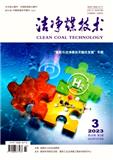
洁净煤技术
北核,CSCD,科核,武A+,高T2
CN中文-月刊影响因子1.905
-
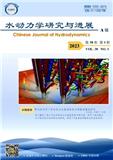
水动力学研究与进展A辑
北核,科核,CSCD扩,武A,高T1,高T2
CN中文-双月刊影响因子1.068
-
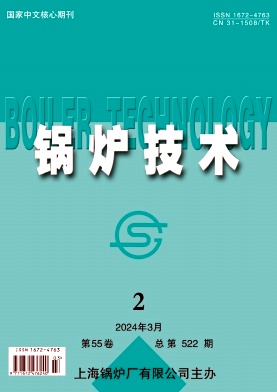
锅炉技术
北核,武B+
CN中文-双月刊影响因子0.937
-
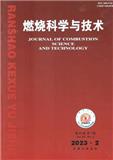
燃烧科学与技术
北核,CSCD,科核,武A
CN中文-双月刊影响因子1.186
-
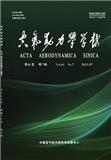
空气动力学学报(不收版面费审稿费)
北核,CSCD,科核,武A-,高T3
CN中文-月刊影响因子1.303
-
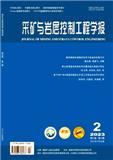
采矿与岩层控制工程学报(原:煤矿开采)(不收版面费审稿费)
北核,科核,高T2,CACJ-核心,EI(中国2024),武B+
CN中文-双月刊影响因子4.989
-
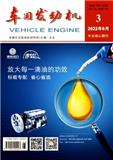
车用发动机
北核,科核,武B+,CACJ-入库
CN中文-双月刊影响因子0.737
-
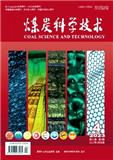
煤炭科学技术
北核,CSCD,科核,武A,高T1,高T2,EI(中国2024)
CN中文-月刊影响因子4.258
常见问题
-
电力能源汇刊杂志社官网、联系方式是什么?
电力能源汇刊杂志社官网:https://ieeexplore.ieee.org/xpl/mostRecentIssue.jsp?punumber=9732629
投稿网址:https://mc03.manuscriptcentral.com/ienergy
投稿邮箱:iEnergy@tsinghua.edu.cn(官网邮箱) -
电力能源汇刊杂志是核心期刊么?
电力能源汇刊不是核心期刊,级别是:, 是:动力工程分类下的
-
请问你们是电力能源汇刊杂志社吗?
我们不是《电力能源汇刊》杂志社。本站主要从事期刊信息展示与期刊推荐,不是任何杂志官网,直投稿件请联系杂志社。本站仅提供免费的学术指导、论文辅导、期刊投稿信息整理收集服务。
-
你们指导服务后可以保证文章被发表吗?
期刊发表的成功与否,主要取决于文章内容的质量。编辑老师会根据研究领域、创新性等多因素进行考量。我们会帮助您理解期刊的发表要求,助力提升发表几率,从而增加发表的机会。
-
晋级论文能否在报纸上发表?
在学术界,论文的发表往往被视为研究者职业发展的重要一环。晋级论文,即为了获得更高职称或学术地位而撰写的学术论文,通常需在专业期刊上发表。然而,许多人可能会问
